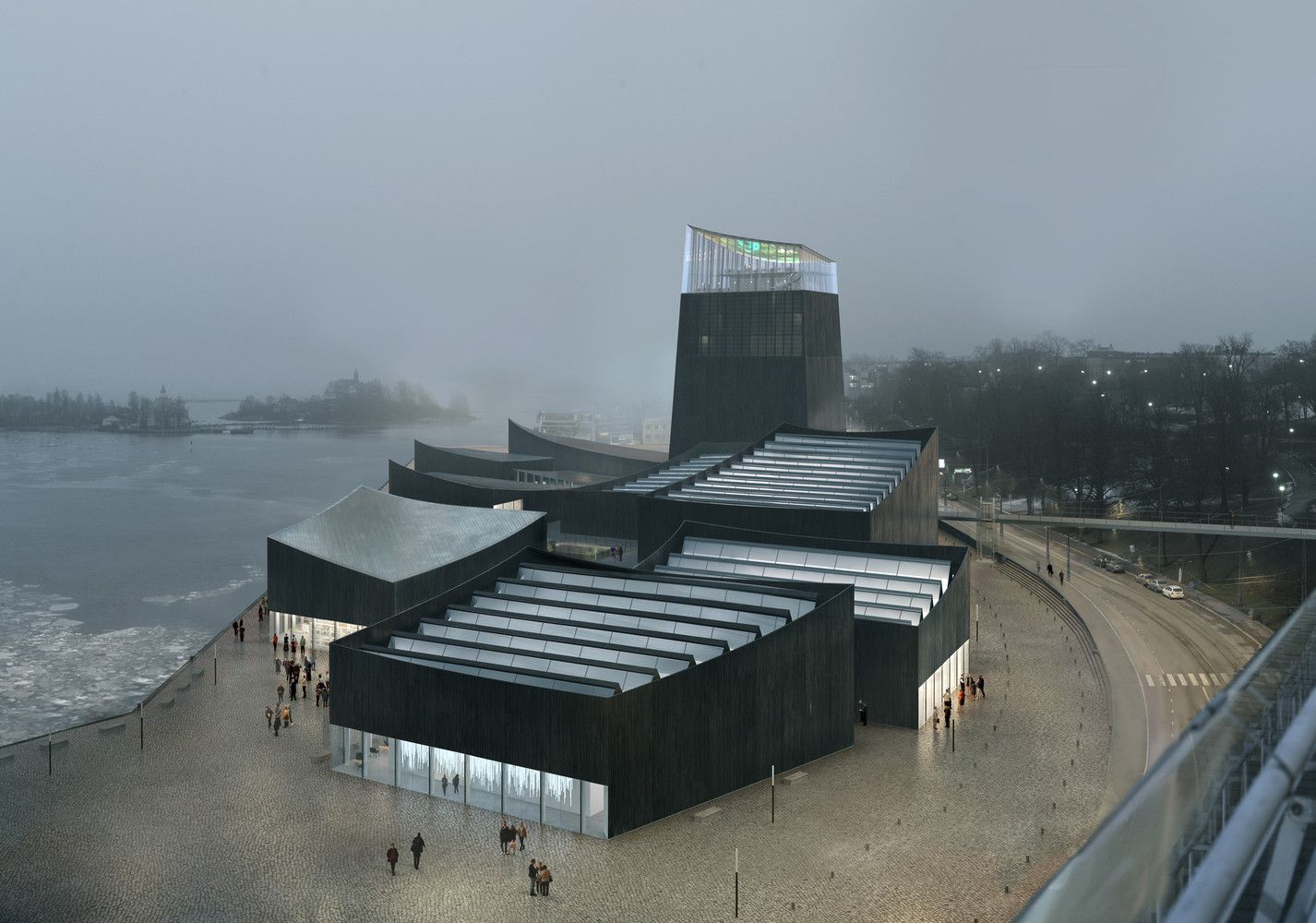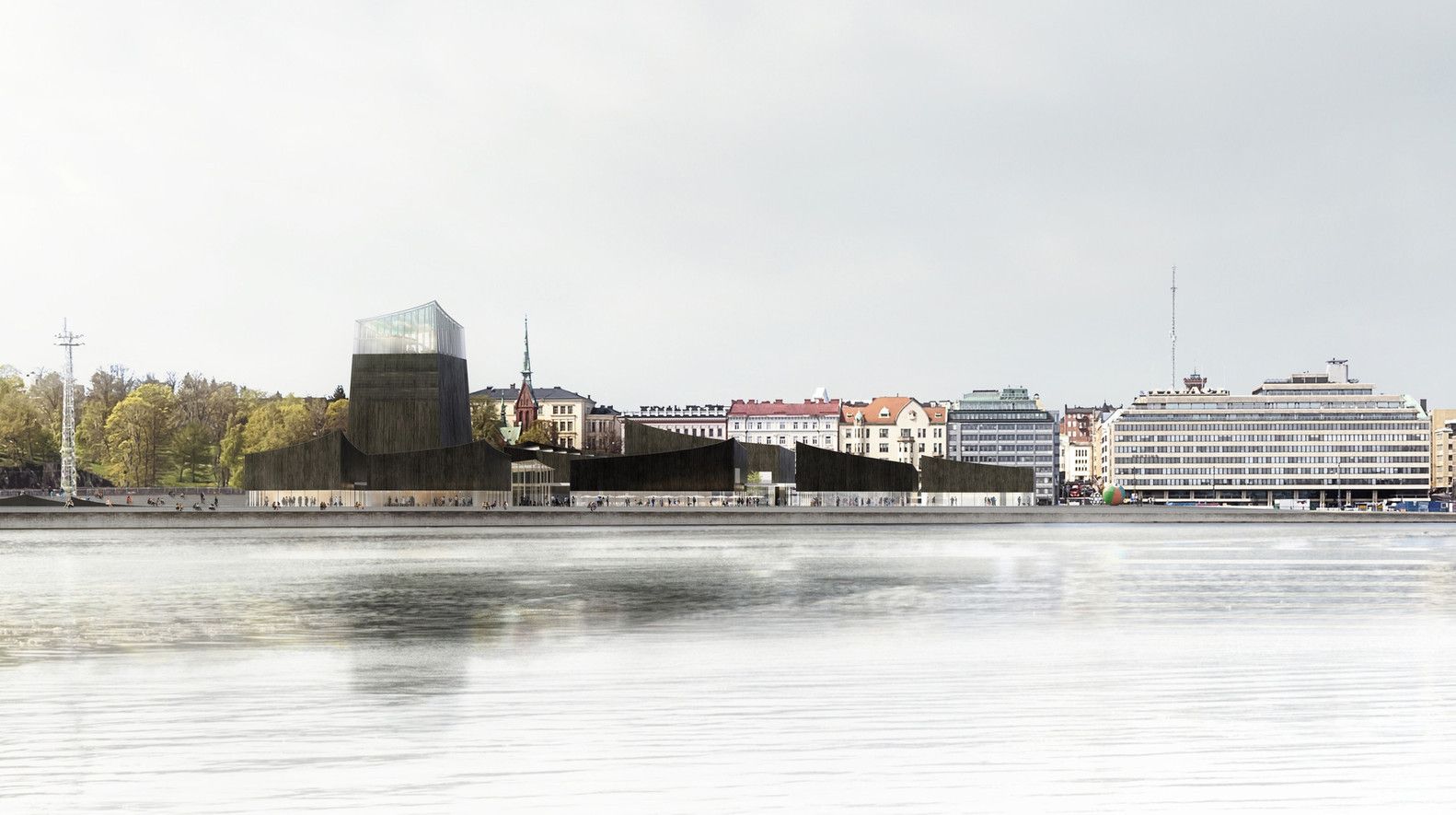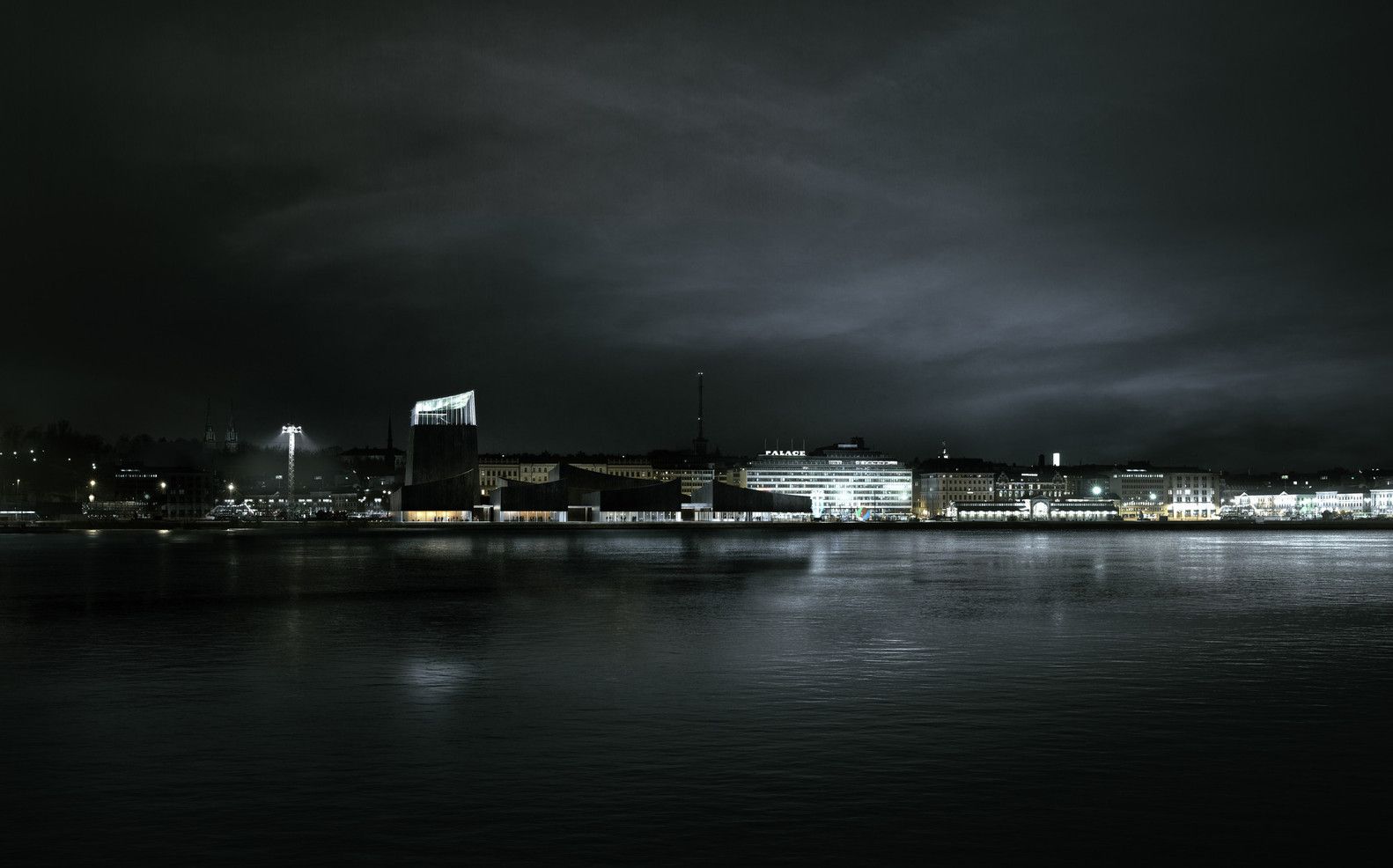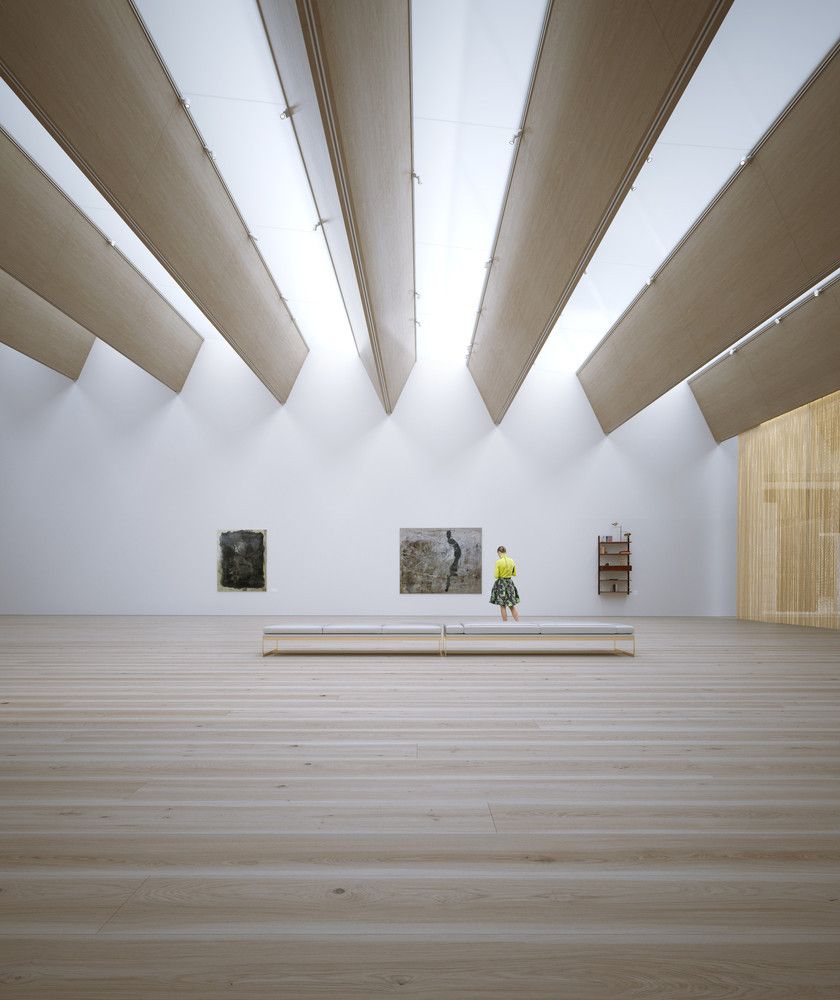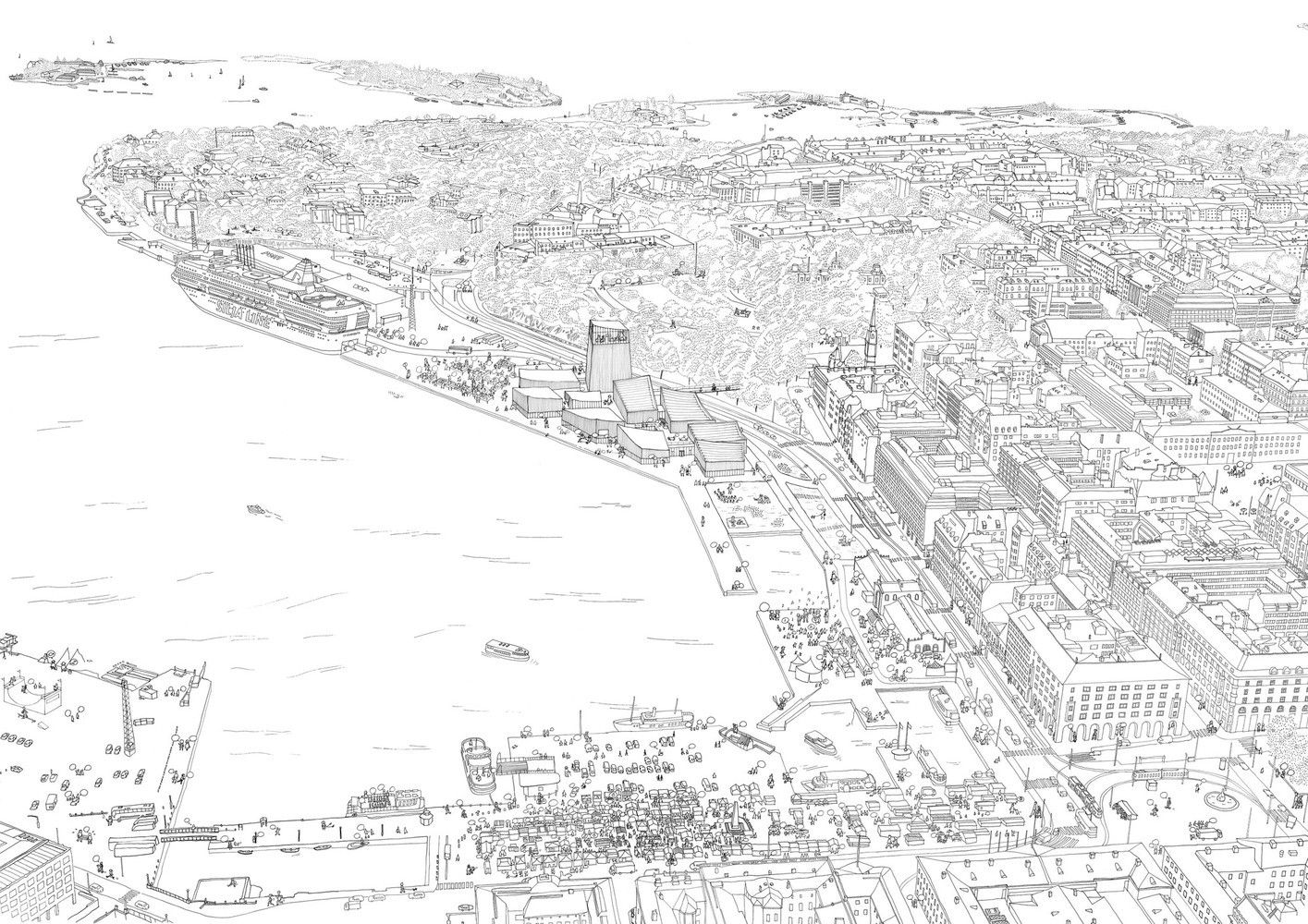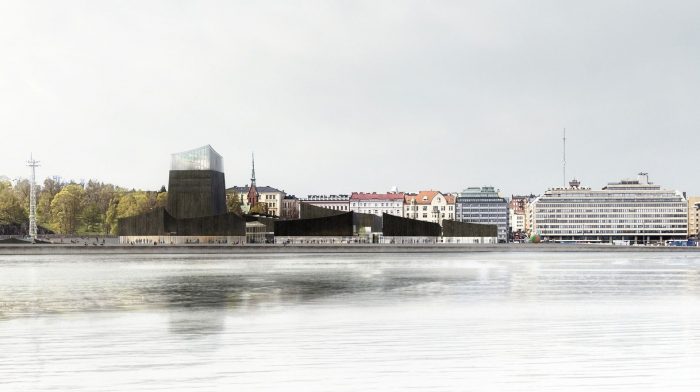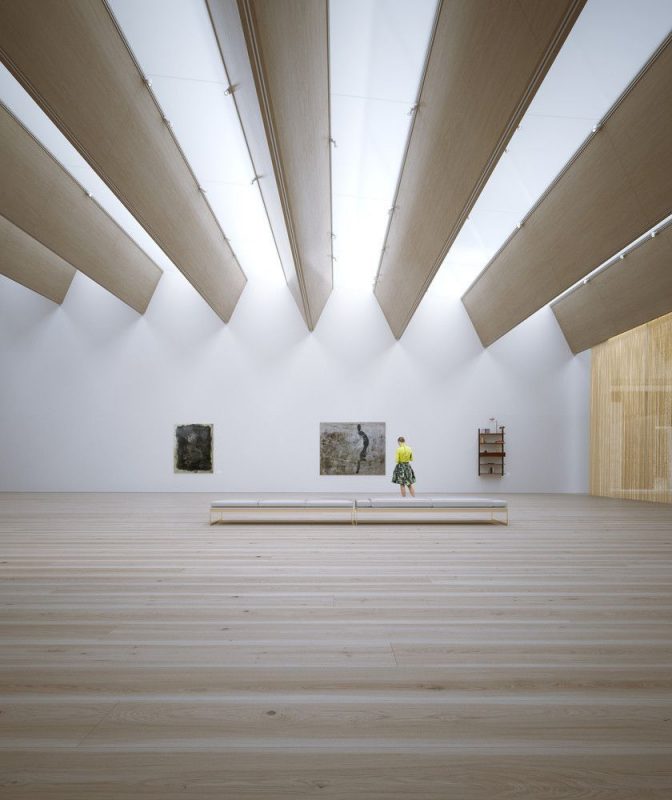The Guggenheim Helsinki proposal is developed mainly as a strategy, not a form, of a three dimensional field of public and gallery spaces. In the main component of the complex, the tower, open and closed spaces are paired in a checkered organization that are later modified according to programmatic and spatial needs to elaborate a flexible, changeable plan. As a result, the spatial byproduct is based upon a combination of checkered and stepped spaces that emphasize the relationships and links established amongst these spaces. Moveable partitions within the spaces allows for a variety of spatial organizations that go from a single module to its double at some moments including geometrical variants that expand its dimension. This circuit of gallery and varying single, double, triple and quadruple height public spaces allows for interaction between these two realms throughout the museum, extending the gallery spaces to the public space. The public space presents both generous and modest dimensions, assigning space at times with monumentality and at others a private character.
The project is organized around two major components: the tower and the bar building. The tower houses the public and gallery spaces of the museum while the bar building houses the rest of the program. The parallelogram geometry results from the projection of site lines, thus allowing the building to face the northern part of the site while remaining parallel to the port. The highest part of the complex, the tower, is aligned with the buildings on the southern part of Etelainen Makasiinakatu so as to allow an uninterrupted visual of the bay and to relate to the urban fabric. The lowest part of the complex, the bar building, is located in front of the park to allow for an extension of the green space at the same time it offers uninterrupted views to and from the park. A sloped roof doubles as a ramp to access this vegetated space which in turn can be transformed into a sculpture outdoor garden. Connections to existing programs occur through this roof garden with an elevated bridge toward the south of the site to connect to the park as well as the extended Olympia Terminal deck.
In terms of materiality the tower will be covered with a glass envelope that protects the gallery spaces clad in local wood. The transparency of the glass skin will create a free flowing public space in the harbor displaying sculptures, bringing the artwork to the everyday life of the citizens. In the interior of the galleries white walls with glass suspended ceilings and wood floors are proposed in order to create a neutral atmosphere for the correct display of artworks. The public space will be lit with natural daylight and the gallery spaces with controlled artificial lighting. In terms of sustainability, the project has been worked out to fulfill LEED Gold certification.
